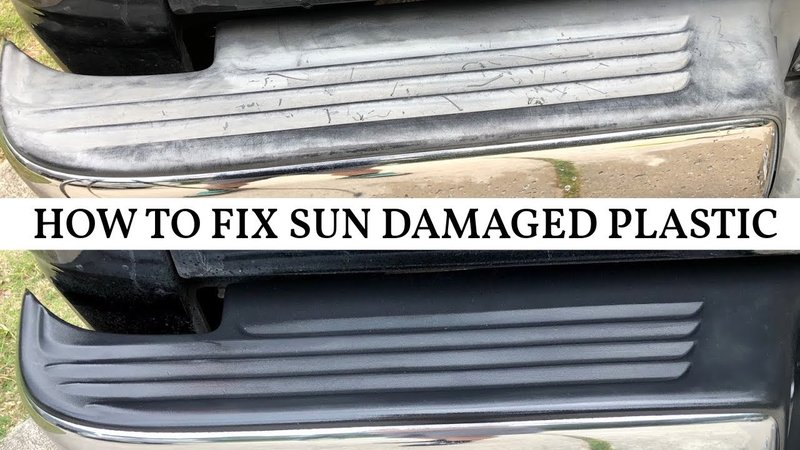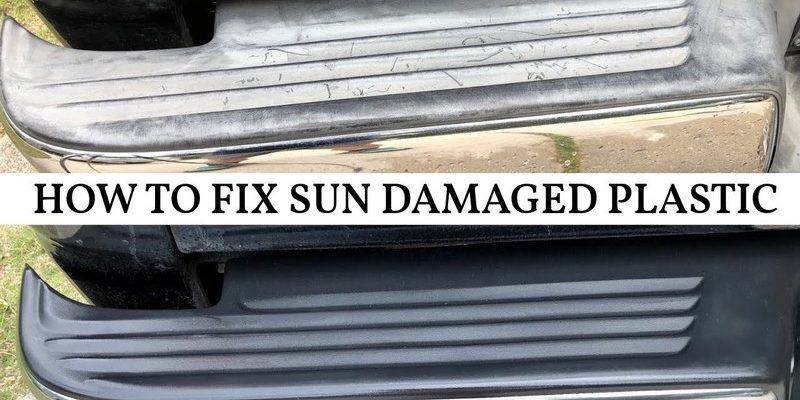
Maybe you installed a Schlage kick plate years ago, or you’ve got a sturdy brass one that came with the house. Regardless of the brand or material, sun exposure doesn’t play favorites. Faded, unevenly colored plates don’t just look bad; they make your whole front entry feel worn out. The good news? You don’t have to ignore it or replace the whole thing. With a little time, some basic materials, and a touch of patience, you can breathe new life into that kick plate—and actually enjoy opening your door again.
Why Do Kick Plates Fade and Discolor Unevenly?
Here’s the thing—doors get more sunlight than most other parts of your house. If you think about it, a kick plate sits low, right where the sun, rain, and dirt all collide. Over months or years, sunlight breaks down the finish on your kick plate. This is called UV degradation, and it’s as annoying as it sounds. The sun’s ultraviolet rays cause paint or metal coatings to oxidize, fade, or peel—often in weird, splotchy patterns.
But it’s usually not just the sun. If your door faces east or west, you probably see harsher fading on one side. Weather also throws in extra challenges. For example, rainwater might pool at the door threshold and leave minerals behind, making some spots lighter or chalkier. And maybe your sprinklers give your kick plate a daily soak—unfortunately, hard water stains are a real thing.
If you’re using a brand-name aluminum kick plate or a brass finish from Schlage or Baldwin, it might hold up a bit longer than a no-name version. Still, even the best brands can’t cancel out years of sun and weather. Different materials respond differently to exposure: brass can tarnish and turn green, stainless steel might dull, and painted plastic can bleach out entirely. After a while, it all adds up to a kick plate that looks like it’s been through a lot more than just the occasional scuff.
Should You Repair or Replace a Faded Kick Plate?
You might be wondering, “Should I just buy a new one?” Honestly, that depends on the extent of the damage—and your patience for DIY projects. If your kick plate is deeply dented, cracked, or warped, replacement is usually your best bet. Severe corrosion or pitting on metal plates also means it’s probably time to retire it.
But uneven fading, minor scratching, and dullness don’t have to mean the end. With a basic repair, you can get a lot more life out of most kick plates. Fixing yours means less waste, less expense, and a nice sense of accomplishment every time you see your front door.
There’s another perk: If you repair your faded kick plate, you’ll probably do a better job matching the finish to your door, trim, or other hardware (especially if your door has a unique color or custom look). Plus, a little restoration work can actually make your whole entryway feel fresher—no big renovation required.
So, unless your kick plate is totally on its last legs, repairing is worth a try. If you later decide the look isn’t perfect, you can always upgrade—but you might be surprised by how much difference a little effort can make.
What Tools and Materials Do You Need?
Let me explain—this isn’t a job that requires a pile of fancy tools. Most repairs use things you probably already have at home, or at least can grab at a hardware store. Here’s a simple list to get you started:
- Protective gloves (always a good idea, especially with metal cleaner or paint)
- Mild soap and warm water
- Soft cloths or sponges (avoid anything too abrasive)
- Fine steel wool or non-abrasive scouring pad for stubborn spots
- Metal polish or brass cleaner (for brass or stainless steel)
- Painter’s tape
- Spray paint (for plastic kick plates, or if you’re painting metal plates)
- Clear sealant spray (for added UV protection after repair)
- Screwdriver (if you need to remove the kick plate)
If your kick plate has a manufacturer’s finish that you want to preserve—say, the classic Baldwin brass look—you might want to buy a cleaner that’s made for that specific metal. For plastic plates, look for a paint that lists UV resistance or “outdoor use” right on the label.
You don’t have to go overboard, but investing in a good polish or spray paint can make the difference between a quick fix and a result that actually lasts.
Step-by-Step: How To Repair a Sun-Faded Kick Plate
Fixing a faded kick plate is a little like giving your car a wash and wax: start with the basics before getting fancy. Here’s a step-by-step breakdown for most common types of kick plates:
Step 1: Remove the Kick Plate (If Possible)
- Unscrew the kick plate using a screwdriver.
- If it won’t budge, you can work with it in place—just tape around the edges of your door to protect your paint.
Step 2: Clean It Thoroughly
- Mix a few drops of mild soap in warm water.
- Gently scrub away all dirt, cobwebs, or sticky residue with a soft cloth or sponge.
- Dry completely before you move on—water and polish don’t mix.
Step 3: Smooth Out Splotchy Spots
- If you see chalky or rough patches, lightly buff with fine steel wool or a non-abrasive pad. Don’t go wild here—you want to even out the finish, not scratch the metal or plastic.
Step 4: Restore the Shine (or Repaint)
- For brass or stainless steel: Use a metal polish or brass cleaner. Rub in circles, then buff with a clean, dry cloth. You’ll be amazed how much comes back.
- For plastic kick plates: If the color is still patchy, tape off the area and spray with a UV-resistant outdoor paint. Several thin coats are better than one thick one. Let each coat dry before adding the next.
Step 5: Add Protection
- After polishing or painting, spray on a clear UV-protective sealant. This helps your repair last longer and keeps the sun from undoing your hard work.
Step 6: Reinstall and Clean Up
- Once everything’s dry, screw the kick plate back onto the door.
- Give the area a final wipe for good measure.
You might be surprised: even a kick plate that looked beyond hope can come back to life with just an hour or two of work.
Tips for Preventing Future Fading and Discoloration
Once you’ve put in the effort, you’ll want to keep your kick plate looking fresh as long as possible. While you can’t completely fight off the sun, a few smart habits make a big difference.
- Regular cleaning: Wipe down your kick plate every few months with a damp, soft cloth. Dust and grit accelerate wear and tear, especially on painted surfaces.
- Apply polish or sealant: For metal surfaces, a thin layer of polish every few months adds a barrier between the plate and UV rays. For plastic or painted metal, reapply clear coat as needed to keep the color true.
- Watch for water spots: Hard water can etch or dull finishes. If your kick plate gets wet, wipe it dry. If you notice mineral buildup, clean it quickly before it becomes permanent.
- Shade, if possible: If you’re really serious, a small overhang or porch awning can reduce direct sunlight. It might not be worth a remodel, but it’s something to think about if you’re already making upgrades.
If you live in a spot with lots of sun or harsh weather, a little regular attention will keep your entryway from looking worn out year after year.
Comparing Metal vs. Plastic Kick Plates—Which Holds Up Better?
If you’re at a crossroads—should you stick with your current kick plate, or swap it for something new?—it helps to know how different types stand up to sunlight.
Metal kick plates (like aluminum, brass, or stainless steel) tend to last longer and resist cracking. Brands like Schlage and Baldwin often use thicker, coated metals. But even the best metals can tarnish, develop water spots, or lose their shine over time, especially if their protective coating wears off.
Plastic kick plates are light, affordable, and won’t rust, but they’re more likely to fade or become brittle when exposed to UV for years on end. If you’ve got a painted plastic plate and the color has really bleached out, sometimes repainting is a temporary fix, but you may want to upgrade to metal next time.
Here’s a quick comparison:
| Material | Resists Fading? | Easy to Repair? | Best For |
| Brass (metal) | Moderate; tarnishes | Yes, with polish | Classic looks, durability |
| Stainless Steel (metal) | High; dulls, but rarely fades | Yes, with polish | Modern & high-traffic doors |
| Plastic (painted) | Low; color can bleach out | Repaint only | Budget-friendly or temporary fix |
If you want less maintenance long-term, metal is usually the way to go. But if you’re repairing a plastic plate for now, there’s no shame in giving it a new coat of paint and moving on.
When to Call It Quits and Replace the Kick Plate
Let’s be honest—sometimes, no amount of polish or paint can save a kick plate. Here’s when you should probably just order a replacement:
- Severe rust or corrosion: If the metal flakes off or feels crumbly, it’s done.
- Deep scratches or dents: These are hard to fill or hide, unless you’re planning to cover the entire thing with paint.
- Warping: A plate that’s bent or doesn’t sit flat looks off, no matter how nice the finish is.
- Broken hardware: If the screws or mounting holes are stripped, a new kick plate will install more securely.
Replacement is straightforward—just unscrew the old plate and use it as a template for a new one. Many brands (like Schlage or Baldwin) include mounting hardware and instructions, so you can swap it out in under 30 minutes. If you upgrade, look for a finish that’s labeled as UV-resistant or “outdoor-rated” for the best longevity.
Wrapping Up: Freshening Up Your Door Without the Stress
No one loves faded, patchy hardware greeting them at the door. But honestly, with the right approach, repairing a sun-faded kick plate isn’t an intimidating project. Whether you’ve got a brass, stainless steel, or painted plastic plate, taking time to clean, polish, or repaint can make your whole entry look sharper—and might even buy you years before needing a full replacement.
So the next time you notice uneven fading, don’t just sigh and walk past. Roll up your sleeves, gather a few supplies, and give your kick plate the refresh it deserves. Your entryway is the first thing guests see, and a simple repair goes a long way toward making your home feel cared for, inside and out.
